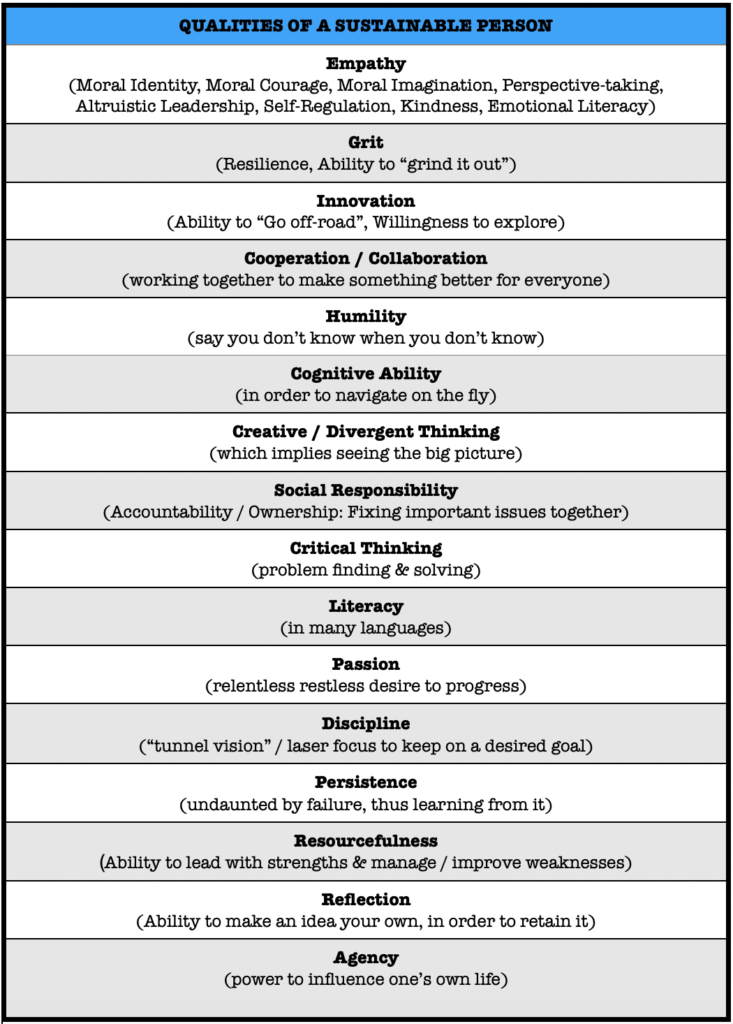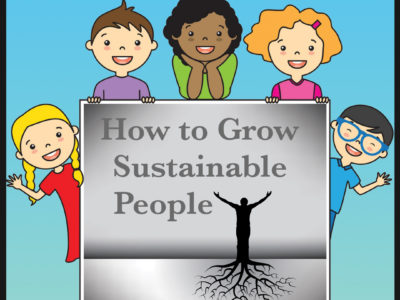People are the main driver of economics, from their role as consumers, producers, and laborers, to the people on top profiting from all of it, so in order to be efficient and effective, economically speaking, the first products coming off our conveyor belts should be Sustainable People; this implies consistent physical, mental and social-emotional stability over an extended period of time. Broken people cost businesses and taxpayers a significant amount of money on the ‘back end’, from healthcare to welfare; simply replacing them does not stop the societal costs from continuing to accumulate. Sustainable People would be a smart “front-end” investment for our overall bottom line.

To manufacture more Sustainable People, the structure of education would need to change. Research has shown us that a child’s social-emotional development begins at birth, and their ability to effortlessly absorb languages falls into a much sooner time frame as well. Education needs to work alongside families from day one, with child development specialists, social workers, nannies, childcare, etc., until a two-year Pre-K program takes over (ages 3-4), followed by two more years of kindergarten (ages 5-6). As a child’s first 12 years will form the basis for their entire future, extra teacher “assistants” (counselors) must be added to every classroom during this time period, to improve everyone’s chances for success.
As we sow these seeds of sustainability, we might as well reap the benefits in real time. Babies could help younger students identify emotions and develop empathy skills. Toddlers could contribute to the mental health of local senior citizens. Younger students could provide childcare assistance to toddlers while reinforcing early language acquisition. Middle school kids could help tutor younger students on language skills such as computer coding. Older kids could mentor or counsel the middle school kids and create learning software for their younger peers. Meanwhile, physical fitness and sports could once again be emphasized, to teach effort, passion, “sportsmanship” and teamwork, while setting the precedent for lifelong preventive health practices. All of this would bring children closer together and give the impression that ‘we’re all in this together’, which is the opposite of what they will feel later on, when trying to make a buck in the ‘private sector.’ The Third Option, of course, wishes to make the American Dream a ’real thing,’ rather than go the other way and admit that it is only designed for a privileged pre-chosen few. By continuing to tie our fates together after we leave the educational womb, the sustainable people we manufacture in school would have a much smoother road on which to travel; in this way, we will have attacked both sides of the ‘sustainability’ problem.

